I would like to produce a plot using facet_wrap that has a different y scale for each row of the wrap. In other words, with fixed scales on the same row, free scales on different rows, with a fixed x scale. Free scales doesn't give me exactly what I'm looking for, nor does facet_grid. If possible, I'd like to avoid creating 2 separate plots and then pasting them together. I'm looking for a result like the plot below, but with a y scale max of 300 for the first row, and an y scale max of 50 in the second row. Thanks for any help!
Here is my code:
library(ggplot2)
library(reshape)
# set up data frame
dat <- data.frame(jack = c(150,160,170),
surgeon = c(155,265,175),
snapper = c(10,15,12),
grouper = c(5,12,50))
dat$island<-c("Oahu","Hawaii","Maui")
df<-melt(dat)
# plot
ggplot(df, aes(fill=variable, y=value, x=island)) +
geom_bar(width = 0.85, position= position_dodge(width=0.5),stat="identity", colour="black") +
facet_wrap(~variable, scales = "free_y",ncol=2) +
theme_bw() +
theme(strip.text = element_text(size=15, face="bold"))+
theme(legend.position="none")+
theme(panel.grid.major = element_line(colour = "white", size = 0.2))+
theme(panel.grid.minor = element_line(colour = "white", size = 0.5))+
theme(axis.text.x = element_text(angle = 90, hjust =1, vjust =0.5, size=18))+
labs(y = expression(paste("Yearly catch (kg)")))

